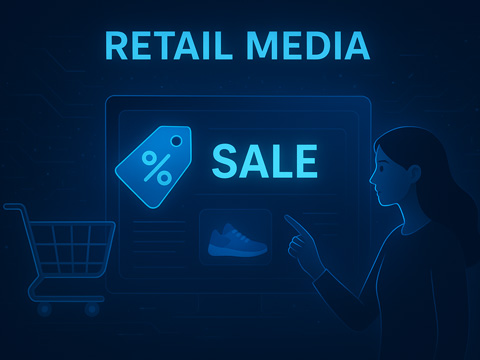On September 10th, the Digiday Retail Media Advertising Strategies event gathered agencies, brands, marketers, and providers to dissect the state of retail media.

Tonique Heaven
Managing Director, Planning & Business Leadership
Discussions spanned everything from growth trajectories and omnichannel execution to measurement and AI. Here are the major takeaways from a tactic that is no longer just emerging, but here to stay.
Market and Industry Overview
- A Rapidly Growing Channel. Retail media is a rapidly growing ad channel, with growth outpacing both social and search in reaching $1 billion in market revenue. While the definition of retail media continues to evolve, experts agree on one thing—its objective is to influence customers at the moment of purchase. Simply put, when people are filling their baskets, you want to be there.
- Growth At Its Core. While still a high-growth sector, the rate of growth is slowing, with retail media projected to grow 15% this year (down from 25% in 2024), and 10% in 2029, putting pressure on retailers to prove their value and build sustainable ecosystems.
- The Landscape Is Broadening. There are over 200+ retail networks, with Amazon, Walmart, and Target taking the lion’s share of expenditure. However, new entrants in the retail media space who do not fall under the traditional retailer category, like Marriott, Uber, Chase, and Bank of America, indicate the definition of retail media is becoming more diverse.
Strategy and Planning
- Holistic Planning Matters. It is imperative that agencies help clients plan retail and national media holistically. A cohesive audience strategy is needed to inform planning across both retail and national channels to create one go-to-market plan that addresses client goals. Furthermore, integration points should be table stakes – for example, using retailer-provided audiences in your brand’s national buys for more precise targeting and personalized marketing campaigns. This “1+1=3” approach can lead to incremental gains in ad awareness, brand awareness, product awareness, purchase intent and sales to the most accurate audience.
- Full Funnel Is the Future: Retail media is shifting from a focus on driving digital sales to a full-funnel approach that builds customer relationships, drives in-store sales, and strengthens brand equity. Partners like Amazon, Walmart Connect, and Roku are helping to blur the lines between retail media and traditional TV advertising.
- Diversification Is Critical. While Amazon continues to lead, it is important for advertisers to diversify their retail strategies (just as they inherently do nationally). Walmart was a big talking point for brands as they began to hedge their bets in this new ecosystem, while experiencing success. Walmart has seen incredible growth, with advertising being a third of Walmart’s income.
- Bridging the Online-Offline Gap: The future of retail media is omnichannel. Retailers are investing heavily in digital technologies to enhance the physical shopping experience and influence purchasing decisions in-store. This includes digital displays, smart carts, and in-aisle screens. With a focus on using first-party data to power dynamic, personalized displays and audio, the goal is to connect online shopping behaviors with in-person purchases to create a seamless, data-rich experience for consumers and brands.
Measurement and Data
- Go Beyond ROAS. Proper attribution and measurement capabilities are crucial for proving that increased ad spend is worthwhile and will be key to propelling retail media to its next phase of growth. While return on ad spend (ROAS) is a good baseline metric for point-of-purchase tactics, it’s not enough to measure the full value of retail media. Agencies should focus on incrementality – determining whether the sale would have occurred without media influence.
- The Challenge of Inconsistency. Fragmentation remains a challenge, with retailers applying different methodologies and definitions to incrementality. Industry groups like the IAB are working toward standardized guidelines to improve comparability across networks.
AI and Automation
- AI In Retail Media. From audience building and campaign optimization to creative and reporting, AI is reshaping how retail media is executed and scaled.
- AI Agents On the Consumer Journey. Emerging solutions like iGentic introduce the deployment of AI agents to businesses to automate tasks, including assembling shopping baskets automatically, potentially reducing search activity and changing the way brands influence consumers at the point of purchase.
Offsite and Non-Endemic Advertising
- Offsite Media is Gaining Ground: Retail media is moving beyond the retailer’s owned and operated sites. Offsite retail media (ads placed on third-party websites, social media, and Connected TV, powered by a retailer’s first-party data) is poised for significant growth, enabling brands to reach audiences across the web.
- The Growth of Non-Endemic Advertisers: Retail media is no longer just for the brands a retailer sells. Non-endemic advertisers (e.g., travel, financial services, and automotive brands) are increasingly using retail media to target high-intent shoppers based on granular purchase data.
The Bottom Line
It is clear the industry is shifting from a focus on simply launching a retail media strategy to optimizing, measuring, and integrating it into a holistic marketing approach. The winners will be those who can deliver clear ROI, master omnichannel integration, and leverage data in a way that is both effective and privacy compliant.
